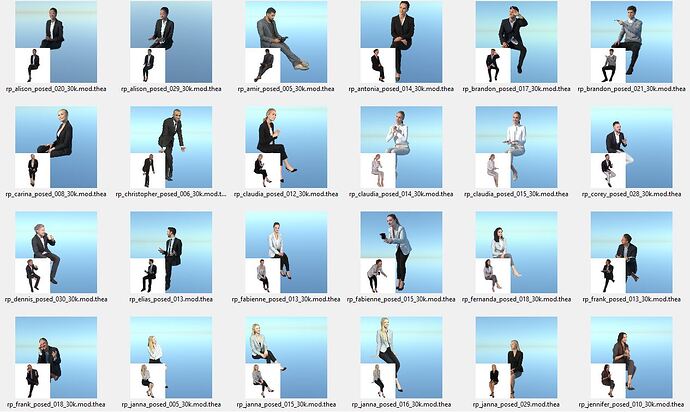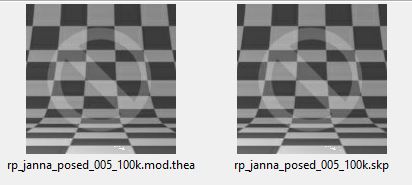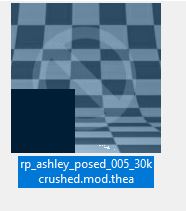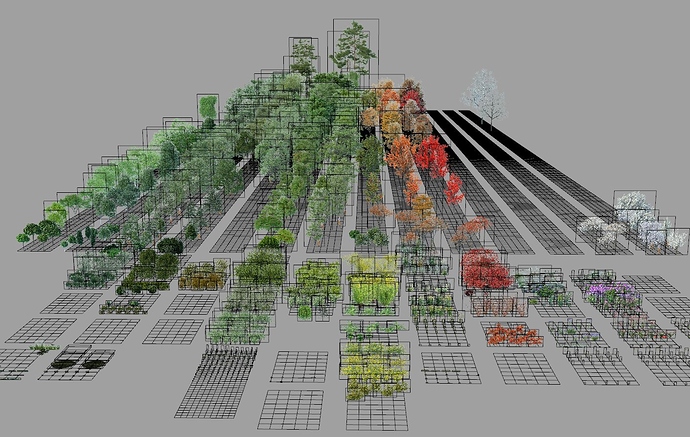Hello all.
I am working with Thea proxies for a long time now and am wondering if my workflow could be improved…
What I usually do:
- EXPORT FROM 3DSMAX:
Open the model in 3dsmax and convert the materials (usually Vray or Corona) to standard (delete the double-sided, falloff, color correction nodes mainly, often simplifying the shaders).
Export as FBX (this creates a material maps hierarchy that is most faithful as the FBX provided by commercial models libraries tend to lose the link to the bitmaps and the models lose the UVW or render white)
- SKETCHUP/TRANSMUTR:
Import the FBX via Transmutr (usually Y up and CM as units), with the option to generate a Thea proxy of course (.mod.thea).
Here I don’t mind the .skp generated by Transmutr.
- SKETCHUP/THEA:
Open the generated Thea proxy (.mod.thea) via the Thea Tools’ “Open or Edit a Thea model” command and tweak the materials (if the default thea materials generated by Transmutr doesn’t give complete satisfaction, that is).
I usually do this to be able to save my materials. As the models in a library often contain several variants of a plant - for instance - and it’s convenient to be able to drag and drop pre-edited materials from Thea’s material browser.
Then for the other variants of the same plant, I just swap the materials. Then I save the .mod.thea.
Open the Thea Browser and drop the newly edited .mod.thea in sketchup’s viewport.
In a frontal view, zoom extent on the mesh and render the view with alpha render element on.
Save the image as PNG. This will be used as a billboard.
-
PHOTOSHOP (or Gimp):
open the PNG and trim the image to crop only transparent pixels. overwrite the PNG -
SKETCHUP
draw a rectangle on the front face of the bounding box and import the PNG as texture on it, scale to fit the face. the transparency of the PNG makes a perfect billboard.
Make sure to paint both faces identically (the backface and frontface).
Move the face to the origin (I used to make it “face to the camera” but now I prefer avoid it to be able to see the orientation better when skattering).
Select All (the billboard face plus the Thea proxy bounding box) and make a component with the name of the proxy and .mod added.
Use TIG’s Originate Components Axes to make sure that the compo’s axis are correctly centered.
Use a frontal view, zoom extent again and save the component in the same folder as the .mod.thea
END
Now I know this is a lot of work, and could be streamlined if I knew how to code…
For instance, I’d like Transmutr to be able to affect materials of an imported model from a folder containing identically named materials (.mat.thea).
Previously I used Thea Studio but now it’s not Thea v2 compatible anymore. Perhaps the Studio version allows for these features?
It would be handy if Transmutr was able to render the billboard itself (as was proposed in the roadmap earlier) of course, but this would need a direct connexion to the renderer and I understood that Altair doesn’t provide the SDK for this kind of purposes.
SKP outputs generally aren’t as explicit as the colors often differ from the SKP and THEA and one of my aims is to use the thumbnails to get a sense of color information.
Thanks for reading ![]()



